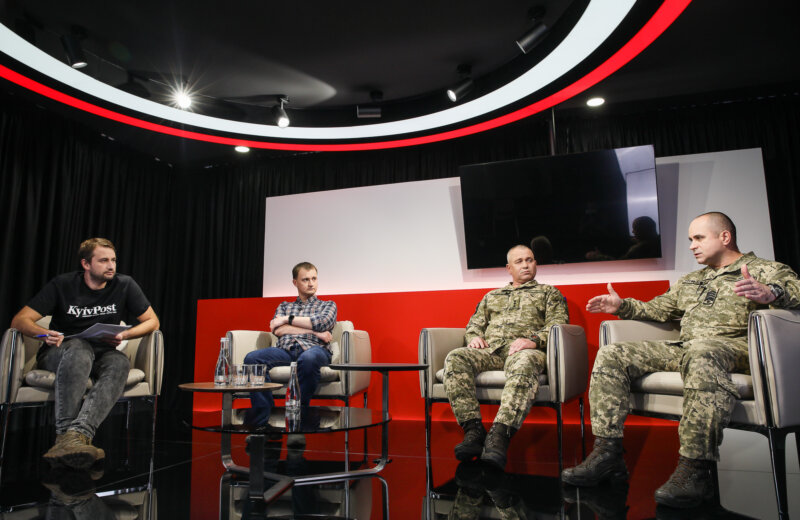For more than two decades, Ukrainian peacekeepers have been working alongside the United Nations and NATO to prevent crises and massacres worldwide. As many as 45,000 military and civilian personnel have participated in 27 peace support operations since 1992, according to Ukraine’s Armed Forces.
Since Russia invaded Ukraine in 2014, Ukrainian peacekeepers often face criticism for participating in missions abroad instead of transferring more troops to combat the Kremlin-sponsored forces in Donbas. However, experts disagree.
Ilya Yehorov, the deputy chief of the army land forces command, training command, mechanized and tank units training department, commented on the issue during the Kyiv Post/NATO webinar “How Ukraine’s participation in peacekeeping missions advances nation’s readiness for NATO membership” on Oct. 27.
Yehorov and the other panelists concurred that Ukraine’s participation in the UN’s operations is actually serving the national interests of Ukraine as troops gather experience from their foreign colleagues.
“The military can use this experience to carry out tasks in Ukraine, particularly in the combat zone in Donbas,” Yerogov said, noting that thanks to the collaboration with Ukraine’s allies during missions, new methods and guiding documents for combat use are being developed.
International missions teach the military how to apply Jus ad Bellum (the law of war) in decisions, according to Oleksandr Kosynskiy, the Ukrainian Armed Forces’ most senior non-commissioned officer and a veteran of peacekeeping missions in Sierra Leone and Iraq.
Peacemaking activities
Ukraine is one of the most active nations when it comes to peacekeeping. NATO is Ukraine’s significant partner in this regard. Together with the 30-nation alliance, Kyiv recently concluded its mission in Afghanistan, and it has boots on the ground in Kosovo with NATO-led mission KFOR.
And even more lies ahead: Ukraine wants to send its peacekeepers to Bosnia and Iraq.
Over the years of peacekeeping activities, Ukraine’s personnel have transported over 91,000 troops and over 200,000 tons of cargo on over 56,000 plane and helicopter flights, Colonel Valentyn Levchyk, then deputy chief of the Department for Military Cooperation and Peacekeeping Operations of Ukraine’s General Staff in 2019.
Taras Chmut, Marine veteran, head of Come Back Alive charity and chief editor of Ukrainian Military Portal website, believes that Ukraine needs to be active in peacekeeping missions as the country is one of the UN’s founders, and it doesn’t mean that troops are less efficient in fighting Russian-supported forces in Donbas.
“Obviously, not all Ukrainian troops are involved in active hostilities in the Donbas. Some are in the rear, others — in training.”
A step towards NATO membership
Since Ukraine became independent in 1991, its attitude towards NATO, the grand defensive alliance of the West, has come a long way. What started out with Kyiv’s non-aligned status, which delighted Russia, turned into a Ukraine at war looking for membership at any cost.
Ukraine keeps introducing new defense reforms while NATO headquarters keeps saying that the “door is open.” This has been going on for years, with no end in sight.
Panelists agree that participating in the peacekeeping mission alongside the alliance is a crucial step towards membership as the Ukrainian military gets the opportunity to better understand how to integrate into the western system.
Also read: 10 facts about Ukraine-NATO relations
“It is a way to see how other countries work in different circumstances, which approaches they have to solve a particular combat task,” Chmut said during the webinar.
“Our NATO colleagues’ experience is based on peacekeeping operations, where they improve and modify their tactics. For our military, it is important to study that,” Kosynskiy added.











